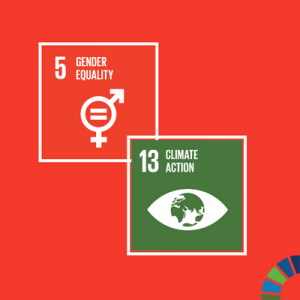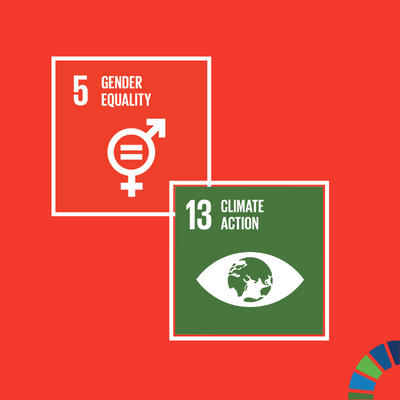
By: Agnes Medinaceli
September 7th, 2022
Tourism plays an important role in the global economy. In 2019, before the pandemic, tourism contributed 10% of global GDP (Statista, 2021). However, it also causes detrimental environmental impacts and contributes to climate change. In 2013 it was responsible for 8% of global greenhouse gas emissions (Lenzen et al., 2018). According to the latest forecasts, in 2030 total transport-related tourism emissions are expected to reach 1,998 million tonnes of CO2, which represents an increase of 25% from 2016 levels (UNWTO/ITF, 2019).
Focusing on Bolivia, tourism promises to be a motor for economic growth. Despite only receiving 8.7 million dollars of public investment between 2016 and 2019, the tourism sector managed to annually generate an average of 799 million dollars from international tourists during the same period, positioning itself as the fourth largest export sector (Andersen et al., 2022).
But does it also promise to be an engine of sustainable development? What are the obstacles and the advantages that it faces?
An important lesson from The Gambia
Before continuing with the Bolivian case, there is a lesson from The Gambia.
The Gambia, a tiny country in west Africa, has apparently achieved the best combination. As of June 2022, it was among a short list of countries which were taking more actions in line with the Paris Agreement (Climate Change Tracker, 2022). As a result, their carbon emissions per capita are one of the lowest in the world (World Bank, 2022). Part of their success is attributed to their focus on tourism. The Gambia has a fast growing tourism industry which accounts for 20% of their GDP (International Trade Administration, 2020). To make things even better, it has become known as a major destination for eco-tourism. There are several ecotourist reserves which deliberately keep visiting groups small to avoid detrimental environmental impacts on the forests (Euronews, 2013).
Their model is not flawless. For instance, it has been reported back in 2008 that 80% of the industry was operated by seven international companies (Mitchell & Faal, 2008) and that profits were repatriated. If things haven’t changed in the last few years, it is difficult to see how tourism can contribute to sustainable development with so many leakages. Nonetheless, it is still admirable how the government is actively working towards cutting the country’s carbon footprint and prioritising sustainable tourism.
Obstacles on Bolivia’s path to sustainable tourism
The UNWTO defines sustainable tourism as the tourism that “takes full account of its current and future economic, social and environmental impacts, addressing the needs of visitors, the industry, the environment and host communities” (UNWTO, 2021). Although Bolivia’s Constitution recognises tourism as a strategic economic activity and the country’s Development Plan aims to promote eco-tourism, the government hasn’t shown signs of materialising the prioritisation of this sector yet. According to the latest Travel and Tourism Competitiveness Report (2019), under the “government priorisation of tourism” category Bolivia ranked 115th out of 136 countries.
Thus, one of the main obstacles of Bolivia’s path to sustainable tourism is the lack of government involvement in the sector. Low public investments in the industry not only translates into poor travel infrastructure and planning, but also into less research on the subject. As observed in The Gambia, part of their success is the role of their government.
Understanding Bolivia’s advantages
Currently, the carbon emissions of Bolivia’s tourism sector are very low (Lenzen et al., 2018) mainly because the development of this industry is still in a nascent stage. There are only few international flights that connect it with the rest of the world. This should be seen as an advantage because Bolivia can still decide which kind of tourism to promote. It has the opportunity to implement policies that prioritise nature-based tourism and eco-tourism.
There are already several initiatives that have shown that there is potential. For instance, a study based on the Tacana Indigenous community of San Miguel, in the Bolivian Amazon, has shown that the positive impact of community-based ecotourism is contingent on the community’s involvement in the development and management of activities (Peredo & Wurzulmann, 2015).
Other initiatives indicate that tourism can simultaneously promote sustainable development as well as gender equality and women’s empowerment. For example, Mujer Montaña, a group led by women, organises hiking tours protecting the mountains from environmental damage and encouraging the preservation of water (El Deber, 2021). Hence, it is also important to study how tourism can empower women (Medinaceli, 2022).
In conclusion, Bolivia’s tourism industry is still quite small compared to other neighbouring countries, so the country basically has a white canvas where the best forms of tourism that protect the environment and promote gender equality can be introduced. If the government and the private sector work together to prioritise eco-tourism and nature-based tourism, the country could benefit from economic growth and sustainable development.
References
Andersen, L. E., Medinaceli, A., & Pacheco, E. (2022). Turismo como Motor de Desarrollo Sostenible e Inclusivo en Género en Bolivia. Boletín de Inteligencia Turística #1. ORBITA. https://orbita.bo/bit/bit01/
Climate Action Tracker (2022). Climate Action Tracker. https://climateactiontracker.org/countries/
Euronews (2013). Ecotourism flourishes in The Cambia, a small jewel in West Africa. https://www.euronews.com/next/2013/10/08/ecotourism-flourishes-in-gambia-a-small-jewel-in-west-africa
Lenzen, M., Sun, Y., Faturay, F., Ting, Y., Geschke, A., & Malik, A. (2018). The carbon footprint of global tourism. Nature Climate Change, 8, 522-528. https://www.nature.com/articles/s41558-018-0141-x.epdf?sharing_token=sLG-6zNU8SsSqJdYi4BcwNRgN0jAjWel9jnR3ZoTv0OWchRe3LnakvyDKR-guL4qloEQgdwp_vyK5UVXF3yYT5QciXdcnQ3jNr0zcbijyy3KHhoGnfF7lmWAVjgXqm5YaFbAXBKsEZL0oC11gZbS4qdck-uizTq4TZBTkMoUyHt9nFWMjcHRhYEIOG2hNDf-tYwANkZ1p6BPHvvwg6An1362UewpJioAbCKfJGQaDwpCVIDfg_Db0-Vo4jXowtiIs88Ld45V0uOPEnLwzzaw4HKBKRi9NSMuIXVOJg3qjTY%3D&tracking_referrer=www.theguardian.com
Medinaceli, A. (2022). Can Tourism contribute to achieving gender equality and women’s empowerment in Bolivia? SDSN Bolivia. https://sdsnbolivia.org/en/can-tourism-contribute-to-achieving-gender-equality-and-womens-empowerment-in-bolivia/
Ministerio de Planificación del Desarrollo (2021) Plan de Desarrollo Económico y Social. Ministerio de Planificación del Desarrollo. http://www.planificacion.gob.bo/uploads/PDES_2021-2025a.pdf
Mitchel, J. & Faal, J. (2008). The Gambia Tourist Value Chain and Prospects for Pro-Poor Tourism. ODI. https://cdn.odi.org/media/documents/98_xOrufKq.pdf
Peredo, B. & Wurzelmann, S. (2015). Indigenous Tourism and Social Entrepreneurship in the Bolivian Amazon: Lessons from San Miguel del Bala. The International Indigenous Policy Journal, 6, 4, Art. 5. https://ojs.lib.uwo.ca/index.php/iipj/article/view/7476/6120
Statista (2021). Share of the total gross domestic product (GDP) generated by travel and tourism worldwide from 2000 to 2021. https://www.statista.com/statistics/1099933/travel-and-tourism-share-of-gdp/
UNWTO & ITF (2019). Transport-related CO2 Emissions of the Tourism Sector – Modelling Results. Madrid: UNWTO. https://www.e-unwto.org/doi/epdf/10.18111/9789284416660
World Bank (2022). CO2 emissions (metric tons). World Bank. https://data.worldbank.org/indicator/EN.ATM.CO2E.PC?most_recent_value_desc=false
Check Mauricio Foronda’s interactive analysis of the data
Analysis
 Español
Español
